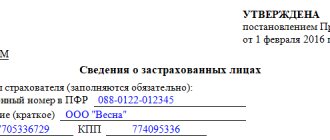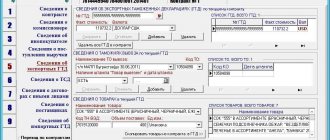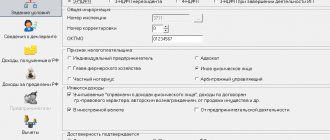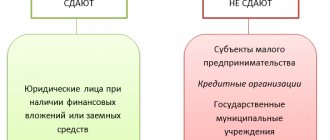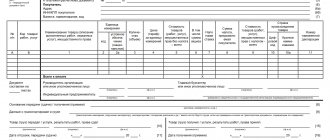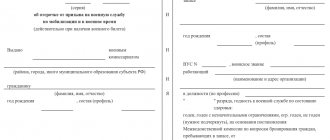The ZP-culture form is intended to reflect information about the number of employees in institutions operating in the cultural sector and the wages accrued to them. The data is indicated for different categories of personnel on a cumulative basis from the beginning of the year. The form must be submitted quarterly to the territorial bodies of Rosstat.
The main purpose of the ZP-culture form is to monitor the dynamics of the level of wages of cultural workers and evaluate the effectiveness of measures taken by the management of the institution in order to improve wages. The new unified document form used for reporting in 2021 was approved by Rosstat Order No. 412 dated July 24, 2020. Instructions for filling it out are also provided here. Business entities will submit the quarterly ZP-culture form starting with the report for the first quarter of 2021.
Salary culture form: who should take it
This document is required to be provided by all state and municipal cultural institutions - organizations operating in accordance with OKVED codes given in Appendix No. 8 to Rosstat Order No. 412. If the organization does not operate at the place of registration, the ZP-culture report is submitted at the place of actual implementation activities. In particular, the report is submitted by organizations carrying out the following activities (according to OKVED codes):
- production of films and television programs (59.11);
- screening of films (59.14);
- activities in the field of radio broadcasting (60.10);
- activities of cultural and art institutions (90.04);
- activities of libraries and archives (91.01);
- activities of museums (91.02);
- activities of cultural parks (93.21);
- other entertainment and entertainment activities (93.29.9).
If there are separate divisions, the ZP-culture report in 2021 must be generated for each of them. The report is also prepared for a legal entity, but it does not include information about separate divisions. You can clarify the need to provide specific statistical reports at the Rosstat branch or using a special online service.
Legislative framework of the Russian Federation
did not come into force Edition dated 30.10.2012
detailed information
| Name of document | ORDER of Rosstat dated October 30, 2012 N 574 “ON APPROVAL OF STATISTICAL INSTRUMENTS FOR THE ORGANIZATION OF FEDERAL STATISTICAL OBSERVATION OF THE NUMBER AND WAGES OF SEPARATE CATEGORIES OF WORKERS IN THE SOCIAL SPHERE AND SCIENCE, IN WHICH RESPECT MEASURES HAVE BEEN CONSIDERED TO INCREASE THE AVERAGE SALARY IN ACCORDANCE WITH THE DECREE OF THE PRESIDENT OF THE RUSSIAN FEDERATION OF MAY 7 2012 N 597 “ON MEASURES FOR THE IMPLEMENTATION OF STATE SOCIAL POLICY” |
| Document type | order |
| Receiving authority | Rosstat |
| Document Number | 574 |
| Acceptance date | 01.01.1970 |
| Revision date | 30.10.2012 |
| Date of registration with the Ministry of Justice | 01.01.1970 |
| Status | has not entered into force |
| Publication |
|
| Navigator | Notes |
ORDER of Rosstat dated October 30, 2012 N 574 “ON APPROVAL OF STATISTICAL INSTRUMENTS FOR THE ORGANIZATION OF FEDERAL STATISTICAL OBSERVATION OF THE NUMBER AND WAGES OF SEPARATE CATEGORIES OF WORKERS IN THE SOCIAL SPHERE AND SCIENCE, IN WHICH RESPECT MEASURES HAVE BEEN CONSIDERED TO INCREASE THE AVERAGE SALARY IN ACCORDANCE WITH THE DECREE OF THE PRESIDENT OF THE RUSSIAN FEDERATION OF MAY 7 2012 N 597 “ON MEASURES FOR THE IMPLEMENTATION OF STATE SOCIAL POLICY”
Instructions for filling out form N ZP-culture
1. Respondents to the federal statistical observation form N ZP-culture are legal entities, regardless of the departmental affiliation of state and municipal forms of ownership (except for small businesses) - organizations of culture, art and cinematography, organizations carrying out economic activities in accordance with the OKVED code "Activities for the organization of recreation and entertainment, culture and sports,” with the exception of the following activities:
92.4 Activities of news agencies;
92.6 Activities in the field of sports;
92.71 Gambling activities.
2. Information in form N ZP-culture is provided by respondents subordinate to the local government body that manages the sphere of culture, the executive body of the constituent entity of the Russian Federation that manages the sphere of culture, and the Ministry of Culture of the Russian Federation - to the territorial body of Rosstat at the location, as well as to the relevant local government bodies or cultural authorities (as appropriate) within the time limits and addresses indicated on the form.
Organizations and cultural institutions (except for those subordinate to the local government body that manages the sphere of culture, the executive body of the constituent entity of the Russian Federation that manages the sphere of culture, and the Ministry of Culture of the Russian Federation) provide the form to the territorial body of Rosstat at their location and to the founder.
3. If a legal entity has separate divisions (branches), this form is filled out both for each separate division and for the legal entity without these separate divisions.
4. The completed forms are submitted by the legal entity to the territorial bodies of Rosstat at the location of the corresponding separate division (for a separate division) and at the location of the legal entity (without separate divisions). In the event that a legal entity (its separate division) does not carry out activities at its location, the form is provided at the place where they actually carry out activities.
The priority is to provide the form electronically. The XML template of the form is posted on the official website of Rosstat gks.ru (Metadata and normative reference information/Statistical reporting in electronic form/Schedule for posting XML templates on the Rosstat Internet portal) and on the official website of the territorial body of Rosstat.
5. The head of a legal entity appoints officials authorized to provide statistical information on behalf of the legal entity, including in its separate divisions.
6. In the address part of the form, the full name of the reporting organization is indicated in accordance with the constituent documents registered in the prescribed manner, and then in brackets - the short name. The form containing information on a separate division of a legal entity indicates the name of the separate division and the legal entity to which it belongs.
The line “Postal address” indicates the name of the subject of the Russian Federation, legal address with postal code; if the actual address does not coincide with the legal address, then the actual postal address is also indicated. For separate divisions that do not have a legal address, a postal address with a postal code is indicated.
A legal entity enters the code of the All-Russian Classifier of Enterprises and Organizations (OKPO) in the code part of the form on the basis of the Notification of assignment of the OKPO code sent (issued) to organizations by the territorial bodies of Rosstat.
For territorially separate divisions of a legal entity, an identification number is indicated, which is established by the territorial body of Rosstat at the location of the territorially separate division.
The type code of the reporting organization (column 3 of the code part of the form) is entered in accordance with the List of types of institutions in the social sphere and science for collecting and developing the results of federal statistical observation on the number and average wages of certain categories of social workers, for whom measures are provided to increase the average wages in accordance with Decree of the President of the Russian Federation of May 7, 2012 N 597 “On measures for the implementation of state social policy” given in these Instructions.
7. Column 1 of the form provides data on the average number of employees on the payroll or the average number of employees for the reporting period, in column 2 - data on the average number of external part-time workers.
The average number of employees for the period since the beginning of the year is determined by summing the average number of employees for all months that have elapsed since the beginning of the year, and dividing the resulting amount by the number of months for the period since the beginning of the year.
The average number of employees per month is calculated by summing the number of employees for each calendar day of the month, i.e. from the 1st to the 30th or 31st (for February - to the 28th or 29th), including holidays (non-working days) and weekends, and dividing the resulting amount by the number of calendar days of the month.
8. The calculation of the average number of employees is made on the basis of a daily record of the number of employees, which must be clarified on the basis of orders for the hiring, transfer of employees to another job and termination of the employment contract. At the same time, for each day of the expired period from the beginning of the year, it is necessary to distribute the payroll employees by personnel categories, sum up the wages accrued for this period by category, calculate the average number of employees for each category, which will make it possible to reflect the transition of an employee from one category during the reporting period to another (for example, if an employee worked as a specialist for 6 months, and for the next 6 months - as the head of a structural unit).
9. The number of employees on the payroll for a weekend or holiday (non-working) day is taken to be equal to the number of employees on the payroll for the previous working day. If there are two or more weekends or holidays (non-working) days in a row, the number of payroll employees for each of these days is taken to be equal to the number of payroll employees for the working day preceding the weekend and holiday (non-working) days.
The number of employees on the payroll for each day must correspond to the data in the employee working time sheet, on the basis of which the number of employees who showed up and did not show up for work is determined.
10. The following employees are not included in the payroll:
a) hired part-time from other organizations;
b) those who performed work under civil contracts;
c) transferred to work in another organization, if their wages are not maintained, as well as those sent to work abroad;
d) sent by organizations to study at educational institutions outside of work, receiving a scholarship at the expense of these organizations; persons with whom an apprenticeship contract for vocational training has been concluded with payment of a stipend during the apprenticeship period;
e) those who submitted a letter of resignation and stopped working before the expiration of the warning period or stopped working without warning the administration. They are excluded from the payroll from the first day of absence from work;
f) military personnel in the performance of military service duties.
11. When determining the average number of employees, the following must be taken into account.
a) The following payroll employees are not included in the average headcount:
- women who were on maternity leave, persons who were on leave in connection with the adoption of a newborn child directly from a maternity hospital, as well as on parental leave;
- employees studying in educational institutions and who were on additional leave without pay, as well as those entering educational institutions who were on leave without pay to take entrance exams in accordance with the legislation of the Russian Federation.
b) Persons who worked part-time in accordance with an employment contract, staffing schedule, or were transferred with the written consent of the employee to work part-time, when determining the average number of employees, are taken into account in proportion to the time worked.
c) Employees who, in accordance with the legislation of the Russian Federation, have reduced working hours, including disabled people, are counted as whole units in the average number of employees.
d) Persons who worked part-time at the initiative of the employer are counted in the average number of employees as whole units.
e) The average number of employees in organizations that worked for less than a full month (for example, in newly created organizations) is determined by dividing the sum of the number of employees on the payroll for all days of operation of the organization in the reporting month, including weekends and holidays (non-working days) for the period of work, by the total number of calendar days in the reporting month.
Newly created organizations do not include organizations created on the basis of liquidated (reorganized) legal entities, separate or non-independent divisions.
12. The average number of external part-time workers is calculated in accordance with the procedure for determining the average number of persons working part-time.
The average number of external part-time workers for the period from the beginning of the year and for the year is determined by summing the average number for all months that have elapsed since the beginning of the year and dividing the resulting amount by the number of months of the reporting period.
13. Columns 3 to 5 include, on an accrual basis, the amounts of remuneration accrued for the reporting period for payroll personnel and external part-time workers.
14. The accrued wage fund in columns 3 - 5 includes all amounts of payments, regardless of the sources of their financing, budget items and tax benefits provided.
In columns 6 - 11 - the accrued wage fund of all employees (from column 3) and the accrued wage fund of external part-time workers (from column 5) are distributed according to sources of financing: columns 6 and 9 respectively reflect data on funds received from the budgets of all levels, in columns 7 and 10 - information about compulsory medical insurance (compulsory health insurance), in columns 8 and 11 - funds from income-generating activities and other funds.
15. An employee who receives two, one and a half, or less than one rate in one organization or is registered in one organization as an internal part-time worker is counted as one person (a whole unit). In this case, an employee who is on the payroll of the organization and performs work on a part-time basis is counted once at the place of his main job; in the wage fund, column 3 shows the amount of wages, taking into account part-time wages; in column 4 from column 3 the amount accrued to the employee for work on a part-time basis is allocated.
If an employee in his main job belongs to one category, and in his internal part-time job - to another category than his main job, then he must be reflected once - in the category to which his main job belongs. At the same time, in column 3 this line reflects the total earnings - for the main job and for part-time work, and in column 4 from column 3 the amount accrued to the employee for work on part-time terms is allocated.
For example, if a librarian works part-time in a position classified as “other employees,” then he should be reflected as a unit in line 06, column 1, and column 3 should reflect his total salary as a librarian and as an employee from among “others.” employees”, in column 4 - only remuneration for internal part-time work, i.e. remuneration of the employee of “other personnel”.
16. An employee who is on the payroll of an organization and has entered into a civil law agreement with the same organization is counted once at the place of his main job, and the wages accrued to him under an employment contract and a civil law agreement are the total amount in the wage fund payroll employees (in column 3); Column 4 identifies remuneration for work under a civil contract. Within the framework of this statistical observation, work under a civil contract concluded by a payroll employee with his organization is considered as an internal part-time job.
17. Columns 1 and 2 do not include persons working only under a civil law contract and not included in the payroll and the number of external part-time workers, and column 5 accordingly does not reflect the amounts of remuneration for persons working only under civil law contracts. Column 5 also does not take into account the amounts of remuneration under civil contracts paid by this organization to persons who are external part-time workers.
18. More detailed methodological instructions for filling out data on the average number of employees and the accrued wage fund are given in the “Instructions for filling out federal statistical observation forms NN P-1, P-2, P-3, P-4, P-5 (m) ", approved by order of Rosstat dated October 24, 2011 N 435.
19. Data on the average payroll number and the average number of external part-time workers (columns 1 and 2), as well as on the accrued wage fund (columns 3 and 5) on line 01 must be consistent with the corresponding data in Form N P-4. For organizations with fewer than 15 employees that are not classified as small businesses and reporting in Form N P-4 on a quarterly basis, the data on line 01 must be consistent with the data in the corresponding columns of Form P-4 for the corresponding period.
For other organizations reporting in Form N P-4 on a monthly basis, the payroll fund data on line 01 must be consistent with the amount of the corresponding data in Form N P-4.
20. On lines 02 - 13, all employees are distributed according to personnel categories.
The distribution of employees is carried out according to personnel categories in accordance with the Unified Qualification Directory of Positions of Managers, Specialists and Employees (section “Qualification Characteristics of Positions of Workers in Culture, Art and Cinematography”), approved by Order of the Ministry of Health and Social Development of Russia dated March 30, 2011 N 251n (hereinafter referred to as the EKS):
line 02 provides information about the head of the institution;
line 03 provides data on persons filling the positions of deputy heads of the institution, heads of structural divisions and their deputies; incl. ticket office managers; heads of the costume department; other categories in accordance with the EKS section “Managers”, with the exception of the head of the institution;
on line 04 - data is provided on persons filling the positions of artistic personnel - theater artist, ballet artist, orchestra artist, circus artist; orchestra (ensemble) artist; circus ballet dancer; artist - trapeze artist; sports and acrobatic artist; artist of the “equilibrium” genre; animal training artist; artist of the genre of horse training; juggling artist; illusion artist; insidious artist, slapstick clown, vocalist (soloist); choir artist; drama artist; artist (puppeteer) of a puppet theater; artist of symphonic, chamber, pop-symphonic, brass bands, folk instruments orchestra; artist of the orchestra of song and dance ensembles, artist of the pop orchestra (ensemble); ballet dancer of a song and dance ensemble, dance group; artist of the choir of a song and dance ensemble, choral group; artists - concert performers (all genres), except for artists - concert performers of the supporting cast; circus orchestra performer; supporting artist of theaters and concert organizations; circus act assistant, etc.;
on line 05 - data is provided on persons filling artistic staff positions - artistic director, chief conductor, chief choreographer, chief artist, their assistants, etc.;
on line 06 - data is provided on persons filling specialist positions in accordance with the sections of the EKS “Specialist Positions” - assistant director, librarian, tour guide, archivist, stage director, production designer, choreographer, choirmaster; prop artist; make-up artist; decorative artist; artist-designer; artist-sculptor; lighting designer; theatrical costume designer; restoration artist; production designer; artist-photographer; master artist for the creation and restoration of musical instruments; speech technique tutor; prompter, etc.;
On line 07, scientific workers are distinguished from the “specialists” group, from which, on line 08, scientific workers are distinguished.
A scientific worker (researcher) is a citizen who has the necessary qualifications and is professionally engaged in scientific and (or) scientific and technical activities (Article 4, Federal Law No. 127-FZ of August 23, 1996). The legal basis for assessing the qualifications of scientific workers and the criteria for this assessment are determined in the manner established by the federal executive body exercising the functions of developing state policy and legal regulation in the field of scientific and scientific-technical activities, and are ensured by the state certification system (as amended by the Federal laws of July 23, 2008 N 160-FZ, of July 27, 2010 N 198-FZ).
Researchers include workers professionally engaged in scientific research and development and directly involved in the creation of new knowledge, products, processes, methods and systems, as well as the management of these activities. To perform these functions, a completed higher professional education is required. The category of researchers also includes administrative and managerial personnel who directly manage the research process (including heads (deputy heads) of scientific organizations and departments performing scientific research and development).
Researchers include workers who carry out scientific supervision of research and development on scientific problems of a fundamental and applied nature and (or) are directly involved in their implementation: chief researcher, leading researcher, senior researcher, researcher, junior researcher, etc. .;
on line 09 - teachers of cultural institutions are reflected;
on line 10 - from the “specialists” group, doctors of all titles are distinguished;
line 11 shows nursing staff (personnel providing conditions for the provision of medical services);
Line 12 shows junior medical personnel (personnel providing conditions for the provision of medical services).
Institutions enter information on lines 10 - 12 only if the specified medical workers are full-time employees, i.e. are on the payroll of the institution (included in column 1) or work on a part-time basis (external part-time employees, included in column 2);
on line 13 - service personnel are listed, i.e. administrative and economic personnel (accounting, office, etc.) and other employees who were not included in the previous categories of personnel, i.e. not reflected in lines 2 - 12.
21. When filling out the form, the following controls must be performed:
gr. 3 >= gr. 4 for all lines, gr. 3 = sum of column 6 - 8 for all lines, gr. 5 = sum of columns 9 - 11 for all lines
page 01 = sum of lines 02 - 06, 11 - 13 for all columns
List of types of institutions in the social sphere and science for collecting and developing the results of federal statistical observation on the number and average wages of certain categories of social workers, for whom measures are envisaged to increase the average wage in accordance with Decree of the President of the Russian Federation of May 7, 2012 N 597 “On measures to implement state social policy”
| Code | Group name |
| 1 | Cultural institutions |
| 1.01 | Public libraries |
| 1.02 | Museums |
| 1.03 | Theaters |
| 1.04 | Cultural and leisure organizations |
| 1.05 | Parks of culture and recreation |
| 1.06 | Circuses, circus groups |
| 1.07 | Zoos |
| 1.08 | Concert organizations, independent groups |
| 1.09 | Production, distribution and screening of films |
| 1.10 | Broadcasting and television |
| 1.11 | Archives |
| 1.12 | Others |
Deadlines for submitting the statistical form ZP-culture
The due date is indicated on the title page of the document. The ZP-culture form must be generated quarterly and submitted to the statistical authorities on the 10th day after the end of the reporting period (quarter).
Business entities are given the opportunity to independently choose in what form to submit the report: on paper or in electronic form. Rosstat notes that the electronic format is a priority. But if an organization does not have the opportunity to send an electronic document, it has the right to provide a report on paper, incl. sending it to the statistical authorities by mail.
ZP-culture form: filling procedure
The document consists of a title page and a sheet on which the tabular part is located. Step-by-step instructions for filling out the ZP-culture are given in Appendix No. 8 to Rosstat Order No. 412.
On the title page, the respondent must indicate for what period the report is being submitted, the name of the business entity and its address, OKPO code. If a separate division does not have a legal address, indicate the postal address with a zip code. If the legal address does not coincide with the actual place of activity, the actual location should be indicated. The reporting organization type code is selected from the List provided in the Completion Instructions.
Next, according to the instructions, the tabular part is filled out in the ZP-culture. The data is displayed for different categories of employees:
- the head of the organization;
- deputy heads;
- heads of structural divisions;
- artistic and performance personnel (including artistic directors, chief conductors, choreographers, artists, their assistants, etc.);
- specialists (assistant directors, archivists, librarians, tour guides, etc.), among whom are scientists and teachers;
- medical workers (provided that they are on staff);
- other personnel.
Filling out the ZP-culture in the table according to the columns is carried out taking into account the Instructions for filling out the form:
- Columns No. 1 and 2 are intended to display information about the average number of employees for the reporting period. Column No. 1 indicates data on the payroll without taking into account external part-time workers, and in Column No. 2 - only on external part-time workers.
- Columns No. 3, 4 and 5 reflect information about the accrued wage fund. Column No. 3 indicates data for the entire payroll (excluding external part-time workers), No. 4 - for internal part-time jobs. Column No. 5 contains information only about external part-time workers.
- Columns No. 6-11 are intended to display data on payroll by sources of funding: from budgets of all levels, funds from income-generating activities. Columns No. 6-8 indicate data for the entire payroll, without taking into account external part-time employees. And in columns No. 9-11, data is entered only for external part-time workers.
The number is indicated with one decimal place, and the amounts are indicated in thousands of rubles.
The completed document form is signed by the manager or official responsible for filling it out. Also indicate the date of compilation, contact phone number and email address.
ZP-culture: instructions for filling out 2021
The salary culture form was approved by Rosstat back in 2021 and has not undergone any changes since then. The template includes two tabular parts, each of which must be filled out. So, the first row of the first table should indicate the name of the organization. In this case, this information must exactly correspond to the information from the constituent documents. The abbreviated name of the institution is also written in parentheses on the same line. In the case when the document is filled out regarding a branch, not only the name of the division itself is additionally written down, but also the name of the main institution.
When entering information in the “Postal Address” column, you will need to enter the following information:
- the region where the organization conducting cultural activities is located;
- legal address, including postal code;
Determine postal code by address
- actual address, if the institution is not located at the address specified in the charter. In the case of separate units that do not have a legal address, they will need to note their actual location.
Also in the first table the OKPO code and the institution type code are noted. It is appropriate to take the first combination of numbers from the notification about the purpose of this code provided by the Rosstat department. If the document is prepared by a branch, then only the division code is written down. In the case where a separate entity does not have the status of a branch, you will need to note the identification number assigned by the local statistics department.
The third cell of the first table is reserved for indicating the organization type code. The list of marked codes is as follows :
The second table is more significant. Its completion is necessary to reflect the average number of personnel of a particular cultural organization for the reporting period (quarter). The first line of the table indicates the number of officially employed personnel. That is, those subjects who were hired on the basis of an employment agreement under the Labor Code of the Russian Federation and who receive an official salary based on the contract.
In conditions where an employed person has not worked a single day within the reporting period, he cannot be classified as an average employee.
The average headcount also does not include:
- external part-time workers;
- employees who carry out their professional duties under the GPA, or who are transferred to another unit without maintaining the subject’s salary;
- those persons who, during the reporting period, carried out their official functions outside the territory of the Russian Federation;
- subjects who, during the reporting period, underwent full-time training with the condition of separation from their main work activities.
Features of calculating the average number of employees
In order to correctly fill out the ZP-culture form in 2021, you will need to correctly calculate the average number of personnel. This procedure is carried out in stages :
- Calculation of the number of employees who belong to the organization's staff. In this case, the calculation must be made for each month of the reporting quarter.
- Identification of the average number of employees for each marked month.
- Calculation of the average number of employees as a whole - for the reporting quarter.
To determine the number of full-time employees, you must use the information noted in the time sheet. When it is necessary to identify the number of employees who were employed on weekends and non-working days, the average number of employees is equal to the values obtained on the day before the weekend.
Direct calculation of the average number of personnel per month is carried out using the following formula: (NBR per day1 + NHR per day2 = NHR per day3...) / CD, where:
- SHR on day 1, SHR on day 2, etc. – list number of employees for each day of the month of the reporting quarter;
- KD – number of days in the reporting month.
For example: (23 + 24 + 23 + 23…+23) / 30 = 23.6 people for September.
Next, the average number of full-time personnel is calculated. This is done using the following formula: (NFR for month1 + NFR for month2...) / KM, where :
- NHR for month1 – the average number of employees per month from the beginning of the year until the end of the reporting quarter;
- KM – the number of months from the beginning of the year until the end of the quarter.
For example: (23.6 + 22.9 + 24...) = 23.4 people – the average number of personnel for each month. It is this indicator that will be included in the second table.
Accounting for cultural personnel by category
The salaries of employees and their number are fixed not only in general terms, but also based on their category. Each such category must necessarily comply with the Unified Qualification Directory. Each cipher should be written in block “A”. In cell 01, note the total number of subjects and the salary of full-time personnel along with part-time workers.
In particular, the columns display the following values regarding categories of employees:
02 – heads of departments or head office;- 03 – deputy heads of head institutions, separate divisions, as well as deputies of deputies;
- 04 – artistic figures;
- 05 – artistic staff;
- 06 – specialists in various areas of culture;
- 07 – scientists;
- 08 – research assistants;
- 09 – teachers;
- 10 are doctors.
It is important to note that the last four columns may not be completed by a number of organizations. For example, libraries must record researchers and workers in the 6th column. In turn, the 9th column is drawn up only by those institutions that carry out educational activities on the basis of an appropriate license. If such a license is not available, then the teachers’ records are kept in the “Other personnel” cell.
